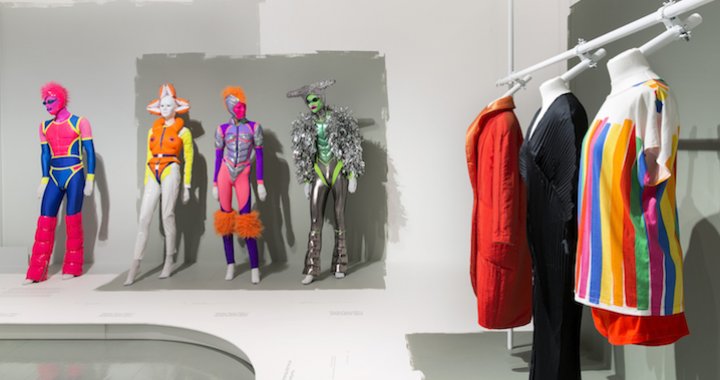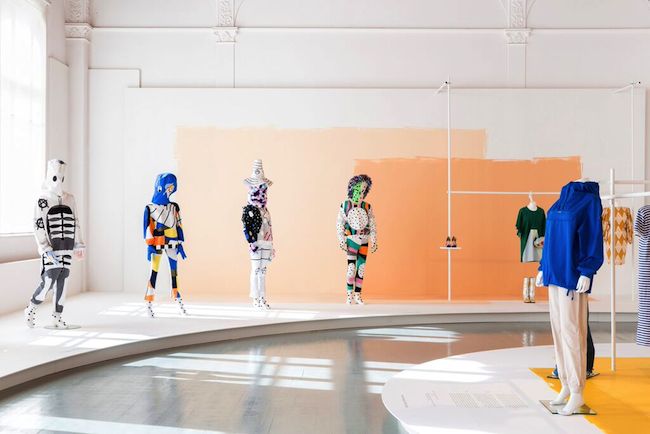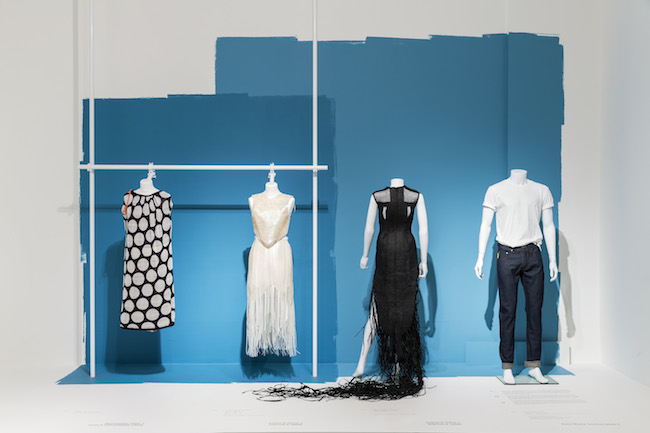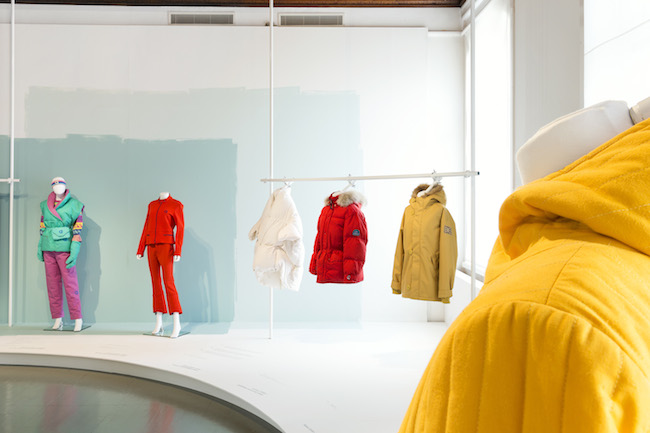
Anthology of Finnish Fashion
An express interview with Liisa Jokinen and Suvi Saloniemi, curators of ‘Anthology of Finnish Fashion’ exhibition at Helsinki Design Museum
08/07/2015
Photos: Paavo Lehtonen
- Anthology of Finnish Fashion -
Design Museum, Helsinki
Through September 20, 2015
Throughout the summer, an exhibition exploring the phenomenon of Finnish fashion from the 1950s until the present day, ‘Anthology of Finnish Fashion’, is on view at the Helsinki Design Museum. The exhibition is centred on the question of how the processes in the Finnish society have manifested in fashion. In what ways does the clothing worn during the last fifty years speak of the long Nordic winters, the post-war years, the proximity of the Soviet Union, the economic boom and events of the millennium? Today asked the curators of the exhibition Suvi Saloniemi and Liisa Jokinen how they would define the original and unique code of Finnish fashion. According to them, it is the modernist, functionalist and practical clothing, often minimalist in style: not too much decoration; pieces that fit together; democratic clothing that suits all. Marimekko’s Tasaraita jerseys are a great example of this. These are clothes worn by men and women, young and old alike in all situations. We were interested to find out more about the ways in which specific circumstances and conditions have influenced the development and evolvement of Finnish fashion.

In your opinion, how Finnish fashion has changed over the recent 50 years in comparison with other Nordic regions?
One important feature that has affected the Finnish society and thus manifested in design is, of course, the big losses in the Continuation War with the Soviet Union (1941–1944). This meant a heavy reconstruction era during the post-war times. There was a dramatic lack of materials and the mental atmosphere was grey. When founded in 1951, Marimekko commented on the post-war years of shortage and drabness with cheerful prints and bright colours. The other speciality of Finnish fashion is the vast industry in the 70s and 80s. Finland was a country of low-cost production in comparison with other Nordic countries. Thus, for instance, Swedish brands manufactured their garments in Finland at the time. During the recent years Finnish fashion students have been very successful in international competitions, such as the Hyères Festival.

What is Finnish fashion’s most notable heritage left by the proximity of the Soviet Union?
The golden age that began in the Finnish fashion industry in the late 1960s and culminated in the 1980s was largely influenced by the proximity of Soviet Union. Finland became more affluent; urbanization proceeded rapidly and the home-made clothing of previous decades was replaced by industrial products. At the highest point of the boom, there were over 500 firms and companies in the fashion industry, employing over 70,000 people. Exports went mostly to the Soviet Union, but also to Sweden and the German-speaking countries. Although extremely large amounts of clothing were exported to the Soviet Union, the designs of the garments needed to stay extremely simple and the materials used were cheap, making this design process less interesting to the designers. The lifting of restrictions on trade, the decline of exports to the Soviet Union, the arrival of foreign clothing chains in Finland and increase of imports from countries with low production costs ended almost all manufacturing of clothing in Finland in the early 1990s.

Tell us how the northern weather conditions led Finnish fashion to evolve differently than fashion in other parts of the world!
The Nordic climate and Finnish winter is something that a Finnish designer cannot ignore. The long-lasting cold winter has pushed and inspired Finnish designers to come up with unique creations that could not have been born elsewhere: duvet jackets, felt boots, fur accessories made of roadkill and leftover materials. Outerwear must resist water and the cold. The extreme winter conditions have encouraged the development of new materials alongside traditional organic ones providing insulation against the cold – down, fur and wool. Finnish manufacturers have made use of their special skills, designing clothing for extreme conditions, such as polar expeditions.

What were the fashion circumstances in which today's Finnish fashion artists grew up? What was fashion like 20 – 40 years ago?
40 years ago the fashion industry was living its golden years. Designers had plenty of work places and jobs to choose from. The situation changed dramatically in the late 80s and early 90s, and designers had to find other ways to practice their profession. So, 20 years ago, in the late 20th century, young designers started to emerge. By the turn of the millennium young designers began to establish their own fashion brands in Finland. The economic recession of the 1990s radically reduced the number of jobs in the clothing industry and designers began to develop alternative ways of finding employment. The spirit of the times underlined the primary role of a designer, small-scale activities and DIY. Finland was in the midst of an IT boom: small companies “set up in garages” were generating business alongside older ones. The Internet spread, and small players, such as Moon TV and ATV, appeared alongside large media firms. The first clothing store run by young designers, Rosebody, opened in 1994, followed by Limbo. Collections began to be displayed in fashion shows, at parties and on the pages of small magazines. Consumers started to show interest in the designer behind the clothes. You can say that it was the starting point, the birth of the Finnish fashion as we know it today. Labels launched that time included, for instance, Panik by Mari Savio and Ivana Helsinki, the latter one still operating.

What are the phenomena or events in Finnish fashion design that we should definitely keep an eye on today?
The Aalto University graduation shows and the Pre Helsinki fashion event in late May. Pre Helsinki is a platform that promotes Finnish fashion and helps emerging Finnish fashion designers gain international contacts and business opportunities. Pre Helsinki presents the most creative and talented Finnish designers. Pre Helsinki organises a yearly event in Helsinki, presents Finnish designers at international fashion weeks and organises match-making sessions and press events in Asia. Design Museum Helsinki has been an active partner of Pre Helsinki, organizing fashion-related exhibitions, talks and hosting the main presentation event during the week.

